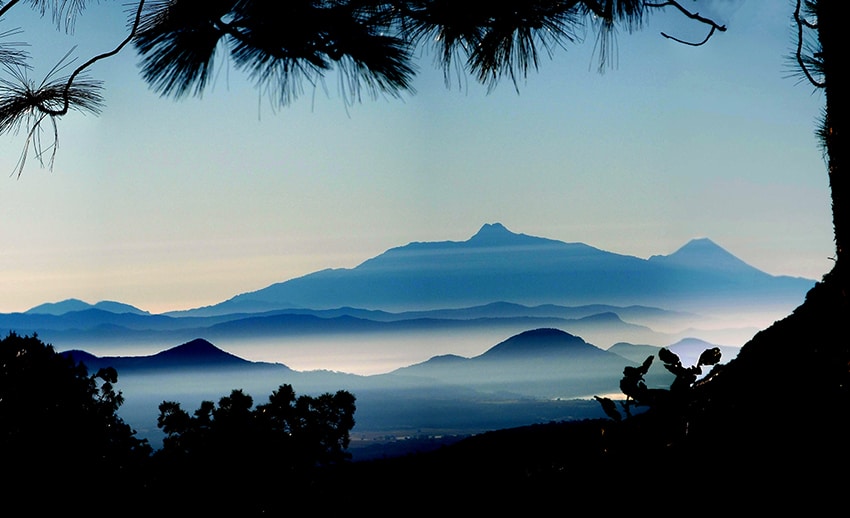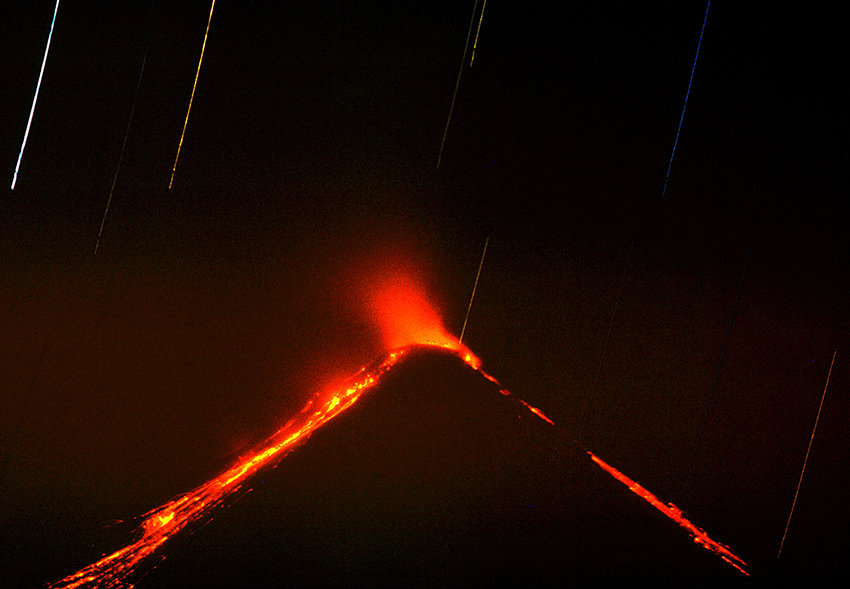Mexico’s most active volcano is sleeping now… but not for long

The Colima Fire Volcano has erupted more than 30 times and is one of the most active volcanoes in the world.
Sometime in 1989, I received a curious request from a friend in Colima, living under the shadow of the Volcán de Colima, better known as the Colima fire volcano.
“The fire volcano is starting to act up and we need volunteers to carry monitoring equipment to the top and into the crater. Please bring big backpacks, empty of course.”
The Colima fire volcano is Mexico’s most active volcano and one of the most active in the world: somehow, my friend knew that our little caving club wouldn’t say no. A few days later, our backpacks heavy with seismographs, heat sensors and transmitters, we began hiking up the steep volcano. Leading us was Dr. Charles B. Connor, today an eminent volcanologist at Florida State University.
As we climbed, Dr. Connor regaled us with cheerful tales of the unpredictability of volcanic eruptions.
On the rim of the inferno
At last, we reached the crater rim. Below us lay Hades itself, all jagged rocks and fumaroles. We slowly made our way to the crater floor, where we unloaded our backpacks. Dr. Connor was soon busy installing his gear while the rest of us amused ourselves by placing sheets of paper in front of hot air vents and watching them burst into flame.
An hour later, most of us were groggy from breathing in who-knows-what-kind-of-vapors.
As we began our descent, I noticed for the first time that my nylon windbreaker had a huge hole in it: apparently a rock I had leaned against was hotter than it looked.
Why was I leaning against rocks? Because sitting is impossible in an environment where your shoes are liable to melt if you don’t watch carefully where you are standing. A few weeks later, lava surged up into the crater, vaporizing all that expensive equipment we had brought, and the volcano shifted from semi-dormant to active mode.
A melding of two volcanoes
The Volcán de Colima is located in western Mexico, about 80 kilometers from the Pacific coast. According to the United States Geological Survey, the Colima Volcanic Complex is a melding of two volcanoes: the older Nevado de Colima to the north, and the younger, more historically active Volcán de Colima the south. Separated by just 8 kilometers, the Volcán de Colima is slightly shorter than its sibling, rising 3960 meters to the Nevado de Colima’s 4330. Curiously, despite their names, both volcanoes are mostly located within the state of Jalisco. The Colima Volcano has erupted more than 30 times since 1576.

Geographer Tony Burton says that the volcano first erupted about five million years ago, although some say it was more like 15 thousand years ago. In more recent times, adds Burton, the volcano’s eruptions have taken a cyclical pattern, with periods of activity lasting about 50 years interspersed with periods of relative quiet.
“In each cycle,” says Burton, “the first results of renewed activity force new lava into the existing crater. Once the crater has filled up, any additional lava is ejected from the crater and flows down the volcano’s flanks. Later … activity ceases, and the volcano enters another dormant phase. Even during this phase, a plume of hot gas often billows out from the volcano.”
A fiery giant in the night
A few years after my visit to its crater, the volcano went back to sleep. In 2004, however, it was once again spurting lava, and I returned to Colima with the hope of photographing “el Fuego” in all its glory.
“We’ll camp in La María,” I told my wife, “where we’ll have a clear view of the action.”
La María is a charming little lake with cabins and plenty of space for camping. Although the monstrous volcano is only 10 km away, you can’t see it from La Maria itself because high walls surround the lake, so off we went into the dark of night. We started down the rustic road heading north toward the now-abandoned village of Yerba Buena, carrying a tripod and flashlights.
The first thing we ran into in the darkness was a cow. Just a few more steps down the road we heard an ominous and very deep rumble, which seemed to awaken a primal urge in us that said “The gods are angry— run for your lives!”
Another rumble and suddenly a bright red spray lit up the not-so-distant sky followed by the appearance of what looked like a river of lava streaming down one side of the volcano.“This is a perfect spot,” I said. “I’m going to set up the tripod.”

Once I had the camera on the tripod, ready for a time exposure, the rumbling stopped and so did the pyrotechnics. The sky was now dead black and there was no way I could be sure I had the entire volcano centered in the viewfinder.
Hoping for the best, I squeezed and locked my cable release, opening the shutter.
During the next half hour, the volcano roared again and again, and each time a red-hot stream appeared in a different place. I assumed at the time that these were rivers of lava, but I later learned they were actually incandescent rockfalls.
Finally, I closed the shutter, but, because I was using a film camera, I had no idea what I had captured. Only a week later did I discover that I had indeed pointed the camera at the right spot and was rewarded with a spectacular image of the Volcán de Fuego bathed in fire.
Time to reawaken
Today the volcano is dormant, but if you have an itch to photograph it in all its fiery splendor, you may wonder: how long will you have to wait? I put this question to volcanologist Nick Varley who is based in Colima city and regularly monitors the volcano.
“For the last seven years,” said Varley, “the fire volcano has been quiet, but past events tell us this volcano typically ‘sleeps’ for between five and thirteen years, suggesting that it may soon be rumbling and spitting lava again.”
If and when the fire volcano of Colima comes back to life, you can safely watch the show from just outside the hidden lake of La María, which you can easily reach by asking Google Maps to take you to Centro Ecoturistico Laguna La María, Colima. Driving time from Guadalajara is about three hours.
The writer has lived near Guadalajara, Jalisco, since 1985. His most recent book is Outdoors in Western Mexico, Volume Three. More of his writing can be found on his blog.
Source: Mexico News Daily

